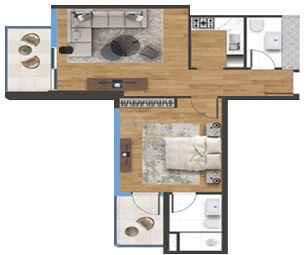New Technologies Renovating the Construction Industry Nowadays

From the market is no stranger to technology, and today it really is experiencing a wave of emerging technologies who advertise to change just how the situation is built. From advanced robotics and 3D printing to augmented reality and the Internet of products (IoT), the is embracing new tools and processes that are improving safety, efficiency, and sustainability. With this blog, we'll examine six of the very exciting emerging technologies from the construction industry today and explore that they are revolutionizing how you design, build, and keep the structures that shape our universe.

Latest Trends in Construction Technology
Building Information Modelling (BIM)
The most unarguably popular technologies is Building Information Modelling (BIM) - an electronic procedure that involves creating a 3D style of a structure and its components, which you can use for design, construction, and maintenance purposes. BIM allows architects, engineers, and contractors to collaborate and coordinate their efforts much better, reducing errors, and improving efficiency. Within the last decade, BIM is becoming an important tool in the construction industry, improving productivity, quality, and sustainability.
As an illustration, BIM was extensively used in the growth of the Shanghai Tower, an internationally recognized architectural project as well as an exemplar for BIM projects, as a result of its status as the tallest and greenest skyscrapers in the world. More than 30 AEC consulting firms were mixed up in the project, with lots of subcontractors and extended design project teams accountable for specific regions of the big skyscraper. They utilized BIM to offer the intense coordination necessary to understand the project to fruition.
Prefabrication
Prefabrication, also called modular construction, essentially means creating buildings or building components at the location aside from the task site. This process has came into common use in the construction industry due to the power to reduce construction time, minimize waste, while increasing quality control. Prefabrication works extremely well in several construction projects such as housing, offices, schools, and hospitals. The dwelling components can be prefabricated off-site and after that assembled quickly on-site, reducing disruption on the vicinity. This approach also provides for an even more accurate timeline for project completion, since the time spent on-site is significantly reduced.
Drone Technology
Drones are probably the most cutting-edge construction tools, offering a massive amount applications in construction, like surveying land, mapping sites, inspecting structures, and monitoring project progress. They can conduct site surveys faster plus much more accurately when compared to a ground crew, and they are less expensive than aerial imaging. Like be equipped with various sensors to recover data on environmental factors like temperature, humidity, and quality of air. By providing accurate and timely information, drones can help construction teams make more informed decisions, improve safety, minimizing project costs.
3D Printing
3D printing technology has begun to revolutionize from the industry by giving an alternative method of construction that is certainly more sustainable, efficient, and cost-effective. Fraxel treatments permits the creation of large-scale objects employing a layer-by-layer approach, that makes it perfect for creating complex architectural designs and geometric shapes. 3D printing enable you to create concrete and also other building materials, including steel and plastic. This lets you obtain materials quicker and streamline the procedure by reduction of unnecessary steps in the center. 3D printing also allows for printing materials on-site, reducing waste and conserving money on transportation and storage.
Recently, a three-story apartment building in Wallhausen, Germany was made and built using COBOD's 3D printer. It stands currently because the tallest 3D-printed residential building (most 3D-printed homes are simply one story). This project was printed on-site, therefore there are no individual parts that needed to be sent and assembled, in comparison to some other like-sized ambitious projects. This ended in financial savings as well as made the project more environmentally and sustainably friendly because there wasn't any requirement for shipment.
Internet of Things (IoT)
IoT or even the Internet of products is a technology that gathers data from many linked devices using sensors and algorithms. Such data benefits the building industry and allows professionals to distinguish safety concerns and confirm that construction is proceeding in accordance with schedule. Seeing that real-time data is available to construction companies because of sensors, they're able to act swiftly and expertly.
For more details just go to the best internet page: https://dubai.etagi.com/en-us
